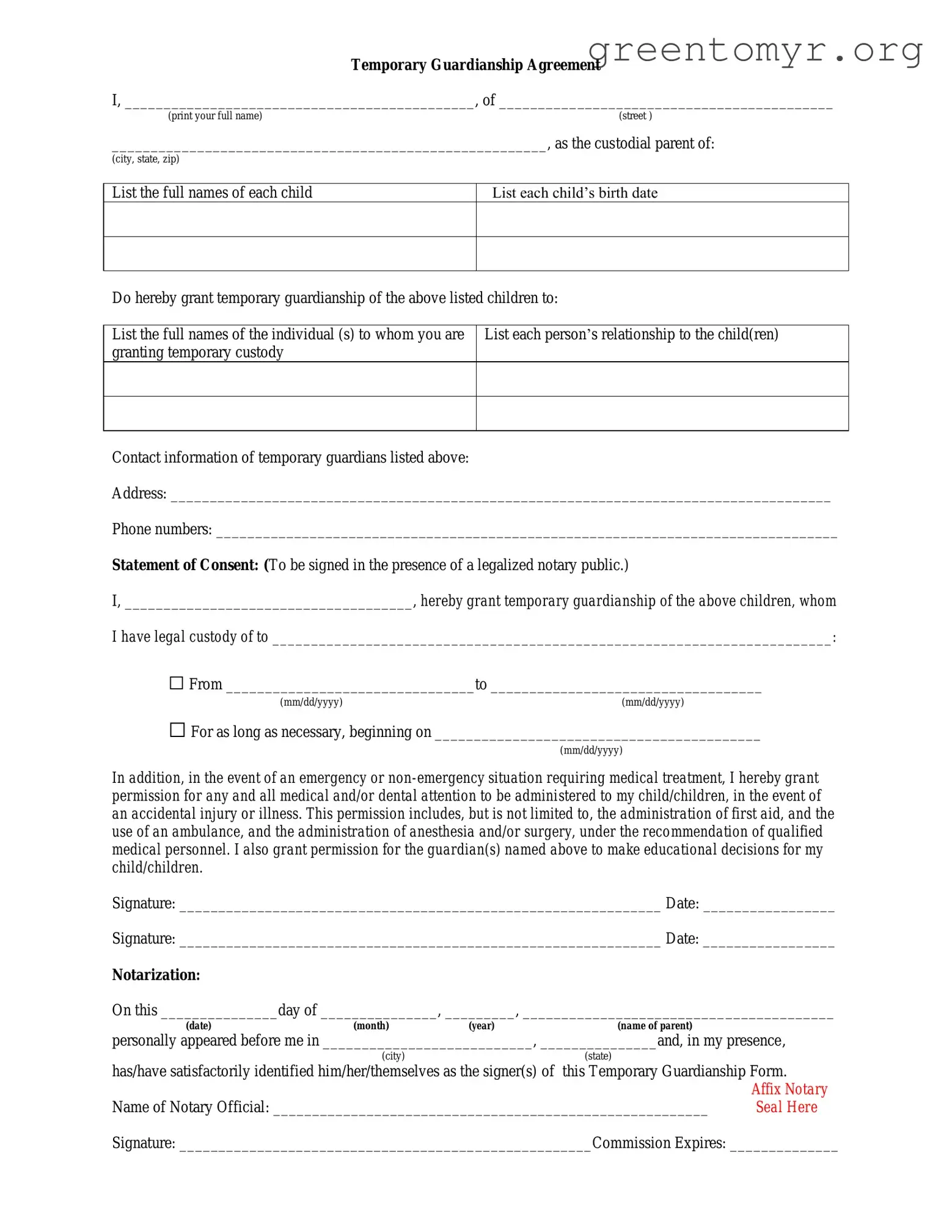Temporary Guardianship Agreement
I, _____________________________________________, of ___________________________________________
(print your full name)(street )
________________________________________________________, as the custodial parent of:
(city, state, zip)
List the full names of each child
List each child’s birth date
Do hereby grant temporary guardianship of the above listed children to:
List the full names of the individual (s) to whom you are List each person’s relationship to the child(ren) granting temporary custody
Contact information of temporary guardians listed above:
Address: _____________________________________________________________________________________
Phone numbers: ________________________________________________________________________________
Statement of Consent: (To be signed in the presence of a legalized notary public.)
I, _____________________________________, hereby grant temporary guardianship of the above children, whom
I have legal custody of to ________________________________________________________________________:
□From ________________________________to ___________________________________
(mm/dd/yyyy) |
(mm/dd/yyyy) |
□For as long as necessary, beginning on __________________________________________
(mm/dd/yyyy)
In addition, in the event of an emergency or non-emergency situation requiring medical treatment, I hereby grant permission for any and all medical and/or dental attention to be administered to my child/children, in the event of an accidental injury or illness. This permission includes, but is not limited to, the administration of first aid, and the use of an ambulance, and the administration of anesthesia and/or surgery, under the recommendation of qualified medical personnel. I also grant permission for the guardian(s) named above to make educational decisions for my child/children.
Signature: ______________________________________________________________ Date: _________________
Signature: ______________________________________________________________ Date: _________________
Notarization:
On this _______________day of _______________, _________, ________________________________________
(date) |
(month) |
(year) |
(name of parent) |
|
personally appeared before me in ___________________________, _______________and, in my presence, |
|
(city) |
|
(state) |
|
has/have satisfactorily identified him/her/themselves as the signer(s) of |
this Temporary Guardianship Form. |
|
|
|
|
Affix Notary |
Name of Notary Official: ________________________________________________________ |
Seal Here |
Signature: _____________________________________________________Commission Expires: ______________

